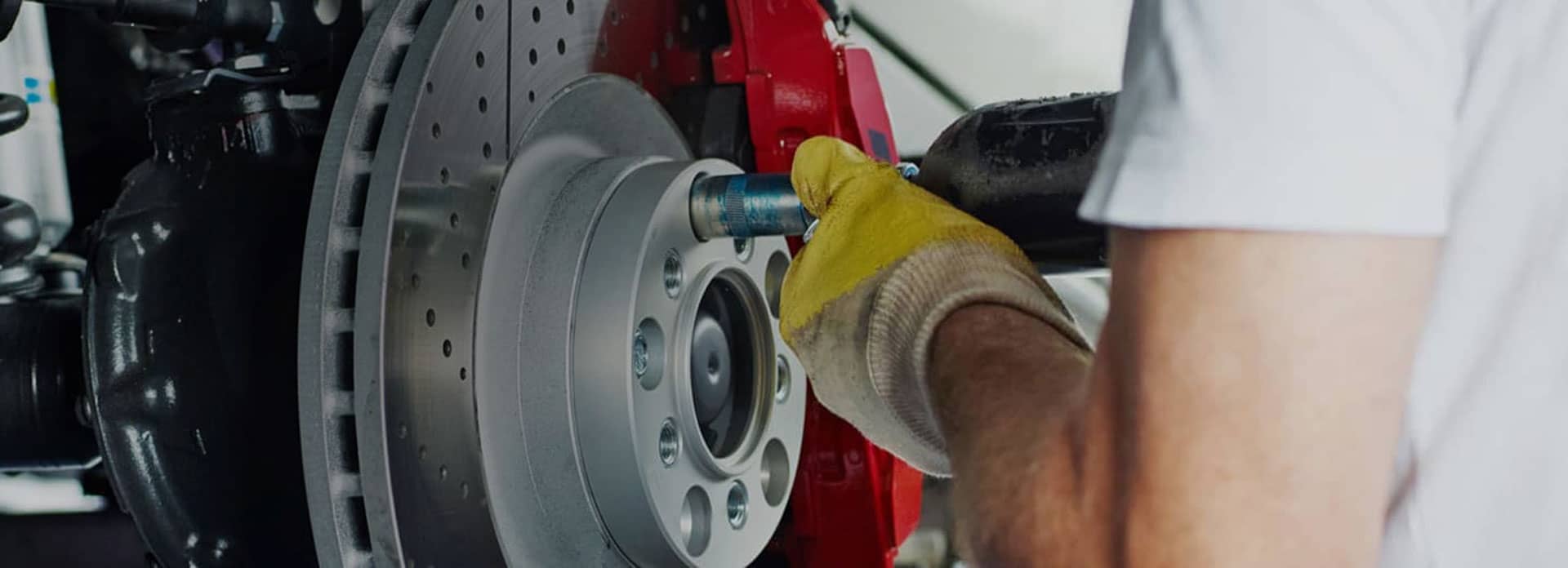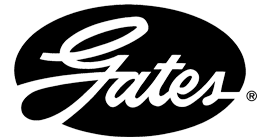
AUTONET TV
Archive for September 2021The Right Stuff (Choosing Replacement Parts)Posted September 26, 2021 10:23 AMLet's face it. Vehicles are complicated machines, each having thousands of parts. And since they're subjected to heat, cold, vibrations, bumps and much more, these parts wear out and need to be replaced. When your service advisor says you need a new part, you may have many options. Let's say you need a new muffler. One choice would be to get exactly the same part that was installed when the vehicle was manufactured. The advantages are that it will perform the same way as the one it's replacing and will likely last about the same amount of time as the original. Some mufflers are made by the same companies that supplied the automaker when your vehicle was new (they call that an OEM part—Original Equipment Manufacturer). And often those are the same as the part you'd buy from a dealer. A reputable vehicle service facility will know which ones these are because they replace mufflers all the time and do their homework. The good news is there are many different mufflers available from several manufacturers. These are called aftermarket parts. Some of them may use different metals or a different construction technique. Some may sound a little sportier while some may make your engine perform better. Your service advisor will discuss what your driving habits are and help choose the part that's best for you. You may be able to get a part that's better than the one originally installed. Here's an example. A repair shop discovered one owner's vehicle had developed cracks and leaks in the hoses that attach to the heater core. They were made of plastic, and heat and pressure had caused the originals to crack. The service advisor recommended they replace it with an aftermarket part that was made of aluminum instead, one that was more durable than the original part. Some aftermarket parts cost more, some cost about the same or less. Depending on how and where you drive and what you want out of your vehicle, you can decide to buy more economical parts which might be the best fit for your needs. Or you may decide to upgrade to a better, more expensive part. TJ's Auto Center Inc. Weather Station on Wheels (Vehicle Sensor Maintenance)Posted September 19, 2021 12:18 PMPlease wait while the video is loading... You probably never thought about it, but your vehicle is like a rolling weather station. It can check the outside temperature, let you know when the roads are slippery and help you deal with rain. And how it does all those things is pretty cool. First, just like any weather station, a vehicle has sensors that measure the driving and weather conditions you find yourself in. Some of those sensors can control computerized systems in your vehicle to react to the weather. It depends on whether you have a 2-wheel, 4-wheel or all-wheel drive vehicle how those sensors will respond. Let's start with temperature. Most vehicles now have a thermometer that measures the temperature outside. It's usually in the front, and likely will tell you on the instrument panel what the outside temperature measures. But a temperature sensor will also tell your vehicle's computers to turn on or off certain systems like the heating or air conditioning. If your ambient temperature sensor isn't working right, some symptoms are a malfunctioning automatic A/C or a temperature display that is way different than the app on your phone says it should be. Your vehicle will also have sensors that measure your speed at each wheel. They work with an onboard computer to measure slippage in any of the wheels so traction control and antilock brakes work correctly in case of slick roads. Your vehicle can measure something called longitudinal and latitudinal acceleration, and it uses a yaw sensor to do it. That helps it determine if you might be in an oversteering or understeering situation. It's important because it works with your vehicle's brakes to apply stopping power to keep you in control. A steering wheel sensor tells the vehicle's computers what the driver is doing with the wheel. It also can work with those wheel sensors to measure how slippery the roads are, whether it be due to a wet (rain) or granular (gravel or sand) surface. By sending different torque or braking to each wheel, it helps the driver maintain control. More and more vehicles now have a rain sensor that can turn on the wipers automatically when they measure precipitation on the windshield. So, you're driving your own weather station, and making sure all this data is coming in properly depends on how each component is working. Regular service and maintenance on these systems is important to make sure they can do their job. Your rolling weather station can't predict the weather, but it can sure help you deal with it, so help it do its job right.
How Far We've Come (Newer Vehicle Technology)Posted September 5, 2021 12:23 PMAutomotive design has come a long way since the days of the Model T, especially when it comes to safety technology. You can thank computers for a lot of the latest innovations. Here are a few that have been making their mark in recent years. Adaptive cruise control. This is cruise control with a brain. Not only will adaptive cruise control keep your vehicle going at a steady speed, it will also slow it down and even stop it if the vehicle ahead of you slows down and stops. Automatic emergency braking. We've all been distracted while driving, and you've probably been in a situation where the driver ahead of you has suddenly stopped. Or maybe your attention wandered for a minute and you looked up to see your vehicle closing in fast on the car ahead of you. (After all, there are a lot more distractions in your vehicle these days.) New systems that use cameras, lasers and other types of sensors will warn you to start braking. If you don't heed the warning, they'll put on the brakes for you. Blind spot warning. We all worry about hitting a car approaching from behind and on either side if we are changing lanes. Rearview mirrors cover some blind spots but they're not foolproof. Enter the blind spot warning system; it warns you with a noise or a light if a vehicle is in a spot you might not be able to see. Lane departure warning. We all try to stay in our lane, but sometimes our attention wanders. If you start to drift out of your lane, new warning systems using cameras and other sophisticated sensors will tell you to get back in your lane. Some send an audible warning, others use a vibration or warning light. Some will even steer your vehicle back into the lane. Rearview camera. There was a time when trucks and SUVs were involved in horrible accidents because the drivers couldn't see what was behind them as they backed up. Children and pets were among the tragic victims. Now, inexpensive rearview cameras are required in the U.S. and Canada, saving lives and providing much more peace of mind for drivers of vehicles with rear visibility issues. It's important to make sure this safety technology is working correctly for these systems to be effective. Your service facility can check and maintain these systems as the manufacturer recommends. TJ's Auto Center Inc. | ||
SearchArchiveJune 2010 (71)July 2010 (4) August 2010 (4) September 2010 (4) October 2010 (4) November 2010 (4) December 2010 (4) January 2011 (4) February 2011 (4) March 2011 (4) April 2011 (5) May 2011 (5) June 2011 (4) July 2011 (4) August 2011 (5) September 2011 (4) October 2011 (4) November 2011 (5) December 2011 (4) January 2012 (5) February 2012 (2) March 2012 (5) April 2012 (4) May 2012 (5) June 2012 (4) July 2012 (5) August 2012 (4) September 2012 (4) November 2012 (1) December 2012 (2) March 2013 (1) April 2013 (3) May 2013 (2) October 2013 (5) November 2013 (2) January 2014 (2) February 2014 (3) March 2014 (1) July 2014 (4) August 2014 (7) September 2014 (4) October 2014 (5) November 2014 (4) December 2014 (5) January 2015 (4) February 2015 (4) March 2015 (4) April 2015 (4) May 2015 (3) June 2015 (5) July 2015 (2) September 2015 (2) October 2015 (4) November 2015 (5) December 2015 (2) February 2016 (2) March 2016 (4) April 2016 (4) May 2016 (5) June 2016 (4) July 2016 (5) August 2016 (4) September 2016 (4) October 2016 (5) November 2016 (4) December 2016 (4) January 2017 (5) February 2017 (4) March 2017 (4) April 2017 (3) May 2017 (5) June 2017 (4) July 2017 (5) August 2017 (4) September 2017 (2) October 2017 (5) November 2017 (4) December 2017 (3) January 2018 (5) February 2018 (4) March 2018 (4) April 2018 (4) May 2018 (4) June 2018 (4) July 2018 (5) August 2018 (4) September 2018 (5) October 2018 (3) March 2019 (4) May 2019 (2) June 2019 (5) July 2019 (2) August 2019 (1) September 2019 (4) October 2019 (5) November 2019 (4) December 2019 (5) January 2020 (5) February 2020 (4) March 2020 (5) April 2020 (1) May 2020 (2) July 2020 (1) August 2020 (5) September 2020 (4) October 2020 (4) November 2020 (5) December 2020 (4) January 2021 (6) February 2021 (4) March 2021 (4) April 2021 (4) May 2021 (5) June 2021 (4) July 2021 (4) August 2021 (5) September 2021 (3) October 2021 (5) November 2021 (4) December 2021 (4) January 2022 (6) February 2022 (4) March 2022 (4) April 2022 (4) May 2022 (5) June 2022 (4) July 2022 (5) September 2022 (4) October 2022 (5) November 2022 (4) December 2022 (4) January 2023 (5) February 2023 (4) March 2023 (4) April 2023 (5) May 2023 (4) June 2023 (4) July 2023 (5) August 2023 (4) September 2023 (3) October 2023 (2) January 2024 (1) February 2024 (4) April 2024 (1) May 2024 (3) June 2024 (5) July 2024 (4) August 2024 (4) September 2024 (5) October 2024 (4) November 2024 (4) December 2024 (4) | CategoriesWinter Prep (6)Tire Pressure Monitoring System (1)Shocks and Struts (4)Engine Air Filter (4)Warranty (1)Headlamps (6)Alignment (9)Check Engine Light (5)Maintenance (19)Parts (1)Differential Service (3)Cabin Air Filter (3)Steering (12)Fluids (8)Cooling System (10)Tires and Wheels (6)Tire Rotation and Balancing (4)Drive Train (5)Exhaust (11)Older Vehicles (2)Automotive News (4)Wheel Bearings (2)Fuel System (10)Service Intervals (3)Service Standards (5)Air Conditioning (10)Inspection (5)Battery (13)Brakes (17)Keys to a long lasting vehicle (2)Timing Belt (5)Fuel Economy (8)Transmission (5)Alternator (7)Auto Safety (5)Safety (2)What Customers Should Know (83)Fuel Saving Tip: Slow Down (2)Dashboard (1)Windshield Wipers (3)Oil Change (9)Customer Detective Work (1)Shocks & Struts (3)Safe Driving (1)Water Pump (2)Tires (12)Suspension (2)TPMS (3)Spark Plugs (2)Winter Tires (1)Fuel Pump (1)Brake Service (6)PCV Valve (1)Trip Inspection (2)Transfer Case Service (1)Fuel Filter (1) | |

OUR REVIEWS


Howard L.The business always does a great job and takes care of him. They are very polite.











